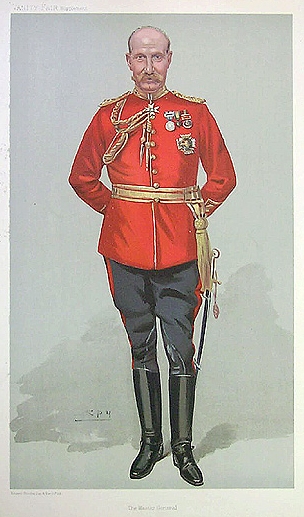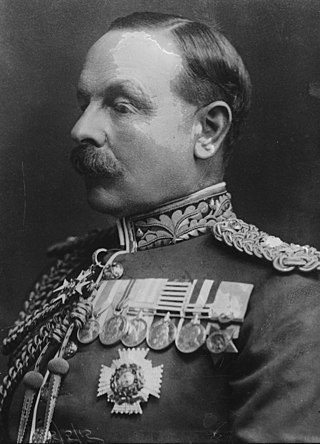
The War Office has referred to several British government organisations in history, all relating to the army. It was a department of the British Government responsible for the administration of the British Army between 1857 and 1964, when its functions were transferred to the new Ministry of Defence (MoD). It was at that time, equivalent to the Admiralty, responsible for the Royal Navy (RN), and the Air Ministry, which oversaw the Royal Air Force (RAF). The name 'War Office' is also given to the former home of the department, located at the junction of Horse Guards Avenue and Whitehall in central London. The landmark building was sold on 1 March 2016 by HM Government for more than £350 million, on a 250 year lease for conversion into a luxury hotel and residential apartments.
The Confederate order of battle during the Battle of Gettysburg includes the American Civil War officers and men of the Army of Northern Virginia. Order of battle compiled from the army organization during the battle, the casualty returns and the reports.

Reginald Baliol Brett, 2nd Viscount Esher, was a British historian and Liberal Party politician, although his greatest influence over military and foreign affairs was as a courtier, member of public committees and behind-the-scenes "fixer", or rather éminence grise.

The Commander-in-Chief of the Forces, later Commander-in-Chief, British Army, or just the Commander-in-Chief (C-in-C), was (intermittently) the professional head of the English Army from 1660 to 1707 and of the British Army from 1707 until 1904. In 1904 the office was replaced with the creation of the Army Council and the appointment of Chief of the General Staff.

A military staff or general staff is a group of officers, enlisted and civilian staff who serve the commander of a division or other large military unit in their command and control role through planning, analysis, and information gathering, as well as by relaying, coordinating, and supervising the execution of their plans and orders, especially in case of multiple simultaneous and rapidly changing complex operations. They are organised into functional groups such as administration, logistics, operations, intelligence, training, etc. They provide multi-directional flow of information between a commanding officer, subordinate military units and other stakeholders. A centralised general staff results in tighter top-down control but requires larger staff at headquarters (HQ) and reduces accuracy of orientation of field operations, whereas a decentralised general staff results in enhanced situational focus, personal initiative, speed of localised action, OODA loop, and improved accuracy of orientation.

The U.S. Army Combined Arms Support Command (CASCOM) is a major subordinate command of the U.S. Army Training and Doctrine Command (TRADOC) and is located at Fort Gregg-Adams, Virginia. Subordinate to CASCOM is the Sustainment Center of Excellence (SCoE), which oversees and coordinates the five sustainment branches of the Army and the Army Sustainment University. The commander of CASCOM is dual-hatted as the head of SCoE. The CASCOM commander also serves as the commander of Fort Gregg-Adams.

The Chief of Army is the most senior appointment in the Australian Army, responsible to both the Chief of the Defence Force (CDF) and the Secretary, Department of Defence (SECDEF). The rank associated with the position is lieutenant general (3-star).

The Directorate of Military Intelligence (DMI) was a department of the British War Office.
The U.S. Army was founded on 14 June 1775, when the Continental Congress authorized enlistment of riflemen to serve the United Colonies for one year.

The Chief of the Army Staff (COAS) is a position in the Pakistani Army held by a four-star general. As the highest-ranking officer, it is one of the most powerful positions in the army.

The Army Service Forces was one of the three autonomous components of the United States Army during World War II, the others being the Army Air Forces and Army Ground Forces, created on 9 March 1942. By dividing the Army into three large commands, the Chief of Staff, General George C. Marshall, drastically reduced the number of officers and agencies reporting directly to him. The Army Service Forces brought together elements of five different components of the Army: elements of the War Department General Staff (WDGS), especially its G-4 division ; the Office of the Under Secretary of War; the eight administrative bureaus; the nine corps areas, which became service commands; and the six supply arms and services, which became known as the technical services. The Army Service Forces was initially known as the United States Army Services of Supply but the name was changed on 12 March 1943, as it was felt that the term "supply" did not accurately describe the broad range of its activities. The Army Service Forces was abolished on 11 June 1946 and most of its functions were taken over by the War Department General Staff.

Lieutenant-General Sir James Wolfe Murray was a British Army officer who served in the Fourth Anglo-Ashanti War, Second Boer War and First World War. He became Chief of the Imperial General Staff three months after the start of the First World War, but was ineffectual and was replaced in September 1915 following the failure of the Dardanelles campaign.
Ordnance sergeant was an enlisted rank in the U.S. Army from 1832 to 1920. The Confederate States Army also had an ordnance sergeant position during its existence. Ordnance sergeants were part of the Army's Ordnance Department and were in charge of the ordnance stores at a particular fort or other Army post. Often they led caretaker detachments or were the sole caretakers of ungarrisoned fortifications and other facilities. In both armies the rank insignia consisted of three inverted chevrons with a 5-pointed star above it.

The Army Council was the supreme administering body of the British Army from its creation in 1904 until it was reconstituted as the Army Board in 1964.

The Board of War, also known as the Board of War and Ordnance, was created by the Second Continental Congress as a special standing committee to oversee the American Continental Army's administration and to make recommendations regarding the army to Congress. On January 24, 1776, Congressional delegate Edward Rutledge, echoing General George Washington's own concerns, suggested that a war office similar to Great Britain's be established. Pressure from Washington and the large volume of military business led Congress to establish the Board of War and Ordnance on June 12, 1776. Five delegates of Congress, initially John Adams, Roger Sherman, Benjamin Harrison, James Wilson, and Edward Rutledge, assisted by a permanent secretary, Richard Peters, composed the Board of War. They assumed the prescribed responsibilities for compiling a master roster of all Continental Army officers; monitoring returns of all troops, arms, and equipment; maintaining correspondence files; and securing prisoners of war. The Board of War began functioning on June 21, 1776.

The Haldane Reforms were a series of far-ranging reforms of the British Army made from 1906 to 1912, and named after the Secretary of State for War, Richard Burdon Haldane. They were the first major reforms since the "Childers Reforms" of the early 1880s, and were made in the light of lessons newly learned in the Second Boer War.

General Sir Henry Crichton Sclater, was a British Army General during World War I.
The King's Birthday Honours 1929 were appointments by King George V to various orders and honours to reward and highlight good works by members of the British Empire. The appointments were made to celebrate the official birthday of The King. They were published on 3 June 1929.
The 1927 Birthday Honours were appointments by King George V to various orders and honours to reward and highlight good works by citizens of the British Empire. The appointments were made to celebrate the official birthday of The King, and were published in The London Gazette on 3 June 1927.

The Army Ordnance Corps is an active corps of the Indian Army and a major formation responsible for providing material and logistical support to the Indian Army during war and peace.














